Simon the Fox, another Bit of Family Lore
Over the past months, my posts on History Imagined have revealed a good bit of family history. Although our roots are deep in American soil, I know most likely where my ancestors originated based on family surnames. But like many Americans, I have no real idea why or exactly when those folks set sail for the New World. I strongly suspect the majority arrived as indentured servants since no family legends mention noble titles in our direct lines. What I do know with great certainty is that we have a large dollop of Scottish blood running through our veins. Maybe those Scottish ancestors arrived by way of Ireland as part of the great migration of Scots-Irish deserting the English plantation scheme originally created in hopes of keeping the native Irish under control. Perhaps some of them were run out of Scotland at the beginning of the Highland Clearances. Maybe they just upped and decided to seek adventure and fortune. It is really impossible to know without a great deal of expensive research.
However those long ago Scots came to be in America, of particular interest to me is my maternal grandfather’s line. He was a Fraser. Clan history tells us that many Frasers came to the New World as soldiers in service to the crown. Hmmm…
We know our Fraser kin, farmers one and all, must have arrived some time during or before the American Revolution because according to family legend they were, oh the horror and shame, Loyalists! This fact caused considerable consternation for a socially prominent aunt whose greatest desire was membership in the Daughters of the American Revolution. Thanks to the efforts of her older sister, who made a hobby of genealogy, the potential DAR member was able to establish our worthiness through a minor family line. However, the younger aunt never quite recovered from the shame of Loyalist associations.
Our Fraser family legends also provide one more little detail. It has always been said that we are descended from Clan Fraser of Lovat, the Highlands branch, as opposed to the Lowlands Frasers of Philorth. The Clan’s most famous, er… infamous chief, was the 11th Lord Lovat, Simon “the Fox” (1667-1747). He might not prompt pride among his distant relations, but he certainly makes for interesting reading.
Simon or MacShimidh (Son of Simon) is so common a Christian name among Frasers that one must sort carefully through the records to distinguish one from another. That said, the 11th Lord Lovat stands out from his kinsmen rather dramatically. His main claim to fame is that of being the last person beheaded at the Tower of London, bringing to a grisly end a life lived to the fullest.
The name Fraser is believed to be of Norman origin and is first found in the south of Scotland in the 12th century. The Gaelic clan name is Friseal, possibly from the French word fraise or strawberry ( note the strawberry flowers in the coat of arms). It is said that a Julius de Berry in 916 presented the French king with bowls of ripe strawberries and was thus ordered to change his name to Fraise and add strawberries to his coat of arms, but this may just be baseless romantic legend.[1] No real evidence can be found that points to the true origin of the name in either France or Scotland.
The first recorded Fraser is a Sir Simon, who in 1160 deeded a large track of land to the monks of Kelso. Later, another Sir Simon (d. 1287) is said to have acquired the Lovat lands through marriage to a Bisset heiress. Whatever the case, the first authentic document connecting Frasers with Lovat lands is dated 1367 wherein a Hugh Fraser is styled “Dominus de Loveth et portioarius de le Ard”. [2]
As with many Highlands clans, the Frasers were no strangers to feuding and fighting. For example, in 1544 Blar-na-Leine (the Battle of the Shirts) was fought so ferociously that in the end only five Frasers and eight MacDonalds were left alive. That day, the Fraser war cry, Caisteal Dhuni (Castle Dounie, ancient clan seat), surely rang from every hill and vale and the clan motto, Je Suis Prest (I am ready), showed exactly what Frasers were ready for.
Simon, 11th Lord Lovat, proved himself as determined as his ancestors in accomplishing his goals. His nickname, “the Old Fox”, is traditionally coupled with his other descriptor, “the most devious man in Scotland.” It is somewhat understandable that he used wiles to succeed because as a second son, like Avis Car Rentals, he had to try harder.
Undiscovered Scotland gives us this brief history of his life:
“Simon Fraser was the second son of Thomas Fraser, and the grandson of the 7th Lord Lovat. The main Clan Fraser seat was at Lovat Castle, on the banks of the River Beauly about a mile east of Beauly. Simon Fraser was born and raised at nearby Castle Dounie, a short distance south of Beauly, which remained his family home throughout his life. Castle Dounie was destroyed by the Duke of Cumberland following the Battle of Culloden and rebuilt in 1880 as a mansion known as Beaufort Castle.
Even as a very young man Simon Fraser’s interests seem to have revolved around building a power base within Clan Fraser that would serve his personal ambitions. In 1699 he secured for himself the title of 11th Lord Lovat and the position of the Chief of Clan Fraser by the brutal expedient of a forced marriage with Amelia, Lady Lovat. She was the recent widow of the late 10th Lord Lovat, who had been a distant relative of Fraser’s. This successfully gained him the title and estates, but so enraged Lady Amelia’s family, including the powerful Duke of Atholl, that Fraser was forced to flee the country. He subsequently lost both the title and the Fraser family estates when his marriage to Amelia was annulled.
In France, Simon Lovat converted to Catholicism and attached himself to the Jacobite court-in-exile. In 1703 he returned to Scotland to sound out clan chiefs about a possible Jacobite uprising. It became obvious that there was little support to be found, so Fraser revealed the plot to the Government of Queen Anne in an effort to gain credit for himself, and falsely implicate the Duke of Atholl. Foolishly returning to France, Fraser was imprisoned there until able to escape in 1714.
During the 1715 Jacobite uprising, Lovat remained on the sidelines, writing to both sides to see which might offer him most advantage. In the event he obtained a pardon for his past crimes from the Government, and later benefitted by acquiring estates which had been forfeited to the Crown by Jacobites involved in the uprising. Meanwhile he continued to pursue a series of legal cases intended to regain the Lovat title and the estates that went with it. He finally succeeded in 1733, becoming 11th Lord Lovat once more.
During the 1745 Jacobite Uprising, Simon Fraser again tried to back both horses. He professed his support to the Jacobites but claimed his age prevented his personal participation (in fairness, he was by now in his late 70s). Instead he sent his son and a force of his Frasers to help the Jacobite cause. He then wrote to the Government claiming that he supported them and that his son’s actions were against his wishes. The Government, this time at least, were not deceived, and after the final Jacobite defeat at the Battle of Culloden, the aged Fraser was forced to flee for his life. He was eventually captured hiding in a hollow tree on an island in Loch Morar, near Mallaig. He was taken to London, where he was put on trial. He became the last person to be executed by beheading in Britain on 9 April 1747, apparently being afforded some small final amusement when a stand erected for spectators collapsed, killing some 20 people. So ended the life of one of the least appealing characters to emerge from Scottish history.” [3]
Simon’s direct line ultimately failed some time in the late 18th or early 19th century. I do not know whether we can claim direct kinship to the Old Fox, but I can tell you this. My maternal grandfather, George Grover Fraser (1885-1955, Hall County, Georgia) bore a resemblance to the portraits presented here. While much more handsome and better behaved than the 11th Lord Lovat, Grandfather and his children all had the wide set eyes, the cupid’s bow mouth, and the rather distinctive nose that seemed to droop into a hook in old age. Whether the nose was inherited from his Fraser or his Cherokee ancestors is a matter of debate, but he bore his Fraser name with pride.
1. http://www.clanfraser.org/clan-history.html, accessed June 9, 2015.
2. http://www.clanfraser.org/clan-history.html, accessed June 9, 2015.
3. http://www.undiscoveredscotland.co.uk/usbiography/f/simonfraser.html, accessed June 9, 2015.
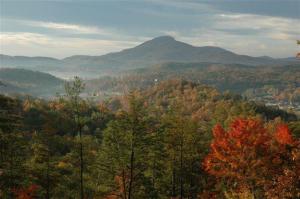


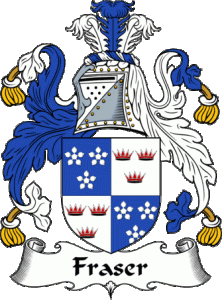
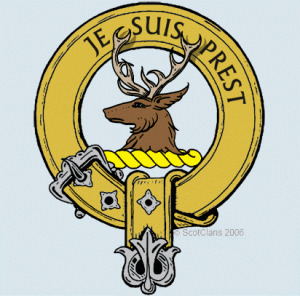
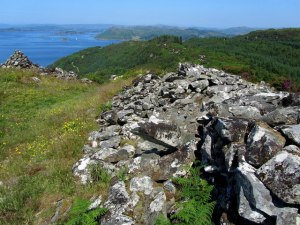
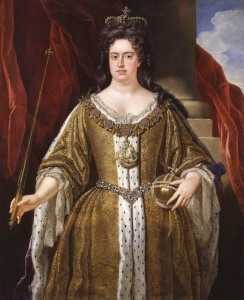


Another great post, Linda. I especially liked the story behind the strawberry flowers on the Coat of Arms. They did seem a bit of a strange embellishment. But I do love strawberries.
LikeLiked by 1 person
Thank you, Becky! Love those strawberries, too!
LikeLike
Wow, what a lot of great info!
LikeLiked by 1 person
Hi Susan, we aim to please and with luck impart a tidbit of something new.
LikeLike
Fascinating, Linda! I am such a mutt I don’t know if I could trace back anything. And did you know, noses grow throughout your lifetime, thus the “hooking” or “sagging” of a nose in old age? It’s true!
LikeLiked by 1 person
Thanks for stopping by, Susabelle! Sadly, I am became painfully and personally aware of noses continuing to grow when I saw some pictures of myself that seemed to focus all attention on my nose. It never looked that big in the past. SHEESH! Feet, ears, and noses all grow forever. It’s just not fair!
LikeLike
This post is so informative. Love the story of your aunt and the shame of having a Loyalist in the family. 🙂
LikeLiked by 1 person
Thank you for stopping by, Angelina! As to my aunt, we should probably cut her a little slack since the DAR doesn’t take things like that lightly! 😉
LikeLike
A lovely history lesson, interesting and impressive.
LikeLiked by 1 person
Thank you for stopping by, Wareeze! Glad you liked the post.
LikeLike
Wow, your family history and knowledge of it is fascinating. Great post!
LikeLiked by 1 person
Thank you for dropping by, Hebby! I spent a lot of time with elderly relatives and loved hearing them tell stories about the family. My fear is that this type of story telling is becoming a lost art, so I’m doing what I can to preserve what I was told. Glad you liked the post!
LikeLike
Very interesting! I only recently discovered my own family’s relation to Simon the Old Fox through my 3rd great grandmother, Elizabeth Frazier Joy. I enjoyed the information.
LikeLike
Thank you for dropping by, Norma. Amazing how many spellings there are of the name, isn’t it? I have a feeling there are many, many of us who can trace a connection to the Old Fox!
LikeLike
So many stories! Mine is on the website – http://blacknee.com/adh/index.html
LikeLike